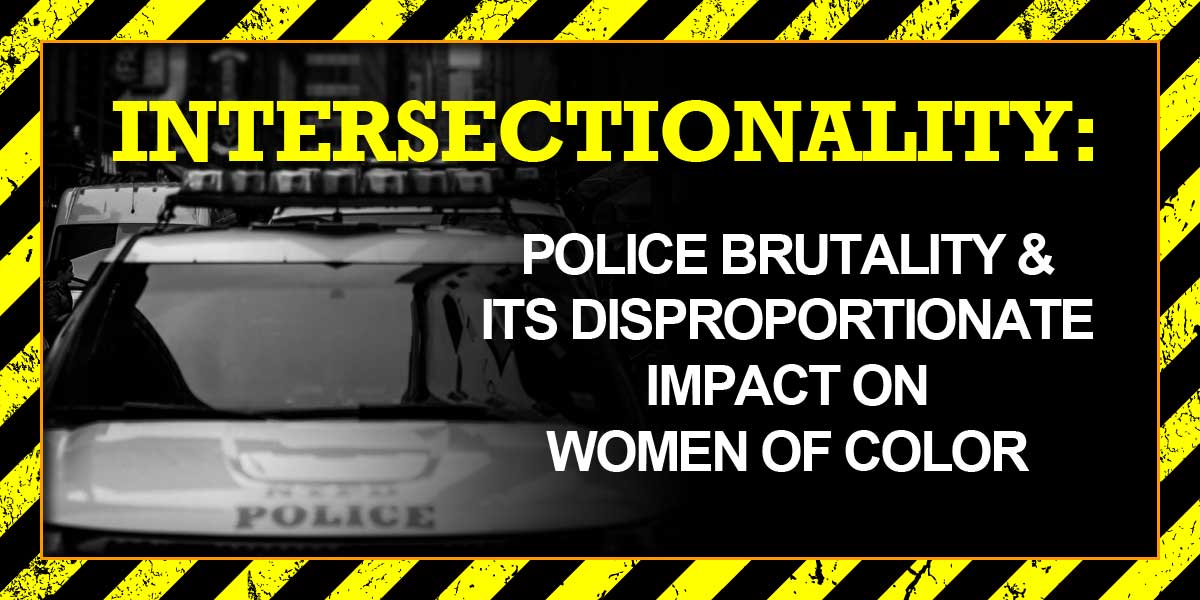When we talk about police brutality, the most visible stories tend to focus on men, particularly Black men, who are victims of excessive force. However, women—especially women of color—are also disproportionately affected by police violence in ways that are often overlooked. At the Law Offices of Michael T. Ridge, we are committed to shedding light on this critical issue and advocating for justice for all victims of police brutality.
Understanding Intersectionality and Its Role in Police Brutality
“Intersectionality” is a term coined by legal scholar Kimberlé Crenshaw to describe how various forms of inequality—such as race, gender, and class—intersect and overlap, creating unique experiences of discrimination. For women of color, this intersection of race and gender often results in a double layer of marginalization, especially when it comes to interactions with law enforcement.
Historically, discussions about police brutality have been centered around men, but women—particularly Black, Latina, and Indigenous women—are also vulnerable to excessive force, wrongful arrests, and violence at the hands of police. Their experiences differ due to the combined effects of sexism, racism, and other societal biases that amplify their risk of harm.
How Women of Color Experience Police Violence Differently
Women of color are often subjected to different forms of police violence that are influenced by both racial and gender-based stereotypes. Some of the key ways this plays out include:
- Sexual Assault and Harassment by Police Officers: According to the Department of Justice, women of color are more likely to be victims of sexual violence during police encounters than their white counterparts. There have been multiple reports of officers abusing their authority to coerce or assault women, particularly in vulnerable situations like traffic stops or in custody. Black and Latina women are disproportionately affected, often facing skepticism or silence when they attempt to report such incidents.
- Criminalization of Survival: Women of color, particularly Black and Indigenous women, are more likely to be criminalized for actions tied to their survival in unsafe environments. This includes being penalized for defending themselves against domestic violence or being involved in minor offenses tied to poverty or homelessness. Law enforcement interactions in these scenarios can quickly escalate into brutality.
- Targeted During Protests: Women of color who take leadership roles in social justice movements or protests are often targeted by police. Whether through physical violence, unjust arrests, or surveillance, they experience disproportionate repression, as seen in many protests against racial injustice and police brutality.
Case Examples: Police Brutality Against Women of Color
- Sandra Bland: In 2015, Sandra Bland, a 28-year-old Black woman, was stopped by a police officer in Texas for a minor traffic violation. The encounter quickly escalated, resulting in her arrest. She was found dead in her jail cell three days later under suspicious circumstances. Bland’s case highlighted how routine police encounters can turn fatal for Black women.
- Mya Hall: A Black transgender woman, Mya Hall, was shot and killed by police in 2015 after making a wrong turn near the NSA headquarters. Her case revealed the additional dangers faced by Black trans women, who are already one of the most vulnerable populations in America.
These cases, and many others, illustrate how women of color face unique forms of violence from law enforcement, often falling through the cracks of public attention.
Legal Challenges in Addressing Police Brutality Against Women of Color
One of the most troubling aspects of police brutality against women of color is the systemic silence that follows these incidents. Legal and institutional barriers often make it difficult for victims to seek justice. For instance:
- Lack of Visibility: Cases involving women of color, especially Black, Latina, and Indigenous women, often receive far less media coverage than those involving men. This lack of attention can reduce public pressure for accountability and make it harder for victims to find support.
- Underreporting: Women of color, particularly those from marginalized communities, may be reluctant to report incidents of police brutality due to fear of retaliation, mistrust of the police, or concern that their stories will not be believed.
- Legal Barriers: Structural barriers like qualified immunity and insufficient mechanisms for police accountability continue to protect officers who perpetrate violence against women of color.
At the Law Offices of Michael T. Ridge, we are dedicated to fighting these legal battles. We understand the unique challenges that women of color face when seeking justice, and we are committed to amplifying their voices and holding law enforcement accountable.
How Our Firm Can Help
If you or someone you know has been a victim of police brutality, we are here to help. The Law Offices of Michael T. Ridge has extensive experience in handling cases of police misconduct, civil rights violations, and excessive force. We take pride in advocating for those whose voices are often unheard and whose cases are often overlooked.
We offer a compassionate, client-centered approach to legal representation, with a focus on securing justice and ensuring that your rights are protected. Police brutality against women of color is an urgent issue that demands attention—and we are committed to being part of the solution.
Contact Us
If you or a loved one has been affected by police violence, do not hesitate to reach out. You can contact us at our office located at:
Law Offices of Michael T. Ridge
910 Grand Concourse, Suite 1D
Bronx, New York, 10451
Phone: 1-800-843-2766
Email: peter@ridgelawfirm.com
We are here to listen, fight for justice, and ensure that your story is heard.
